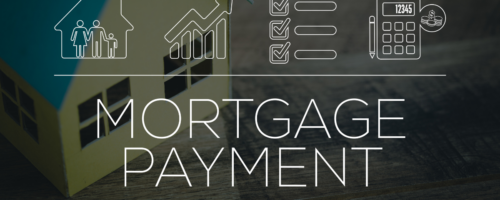In an era characterized by an increasingly high cost of living, the intersection of financial readiness for retirement and its ripple effects on the workplace is emerging as a critical concern. So, how is the high cost of living and retirement preparedness connected?
As individuals grapple with the challenges of preparing for life after work against the backdrop of rising expenses, employers find themselves navigating uncharted territory in managing a workforce that may be financially stretched.
This article delves into the intricate relationship between the soaring cost of living and retirement preparedness, shedding light on the profound impact this dynamic has on workplaces. From delayed retirements to altered productivity dynamics, the financial strain on employees directly influences the corporate landscape.
Join us as we explore the intricacies of this issue, examining how the high cost of living and retirement preparedness are not just personal financial matters but integral components shaping the present and future of the modern workplace.
The Shift in Financial Concerns Among American Companies and Workers: The High Cost of Living and Retirement Preparedness
Recent trends show a major shift in financial concerns among companies and their workers. Once focused on retirement readiness, the primary concern now seems to be dealing with the high cost of living.
The Employee Benefit Research Institute (EBRI) surveyed employers across America and found this surprising trend. But why has this happened? Let’s explore how inflation plays a role here.
The Role of Inflation in Rising Living Costs
Inflation is like an invisible thief that eats away at your money’s value over time. You may not perceive it daily, yet over the long haul you’ll begin to feel its consequences.
The U.S. saw peak inflation rates hit 9.1% back in June 2023 – something akin to running up a down escalator. Since then, however, things have improved slightly; by September 2023 we saw it drop nearly 60%, resting at about 3.7%. That sounds great until you realize even at these lower levels, prices are still rising faster than wages for many people.
This continuous rise despite decreased inflation shows just how significant our cost-of-living issue is becoming across the nation—almost like trying to keep your balance on a seesaw that keeps tilting more one way.
Americans’ Response: Save More or Spend Less?
Diving deeper into this, the choice between saving more or spending less is a common dilemma for Americans. With costs constantly on the rise and income levels staying put, people are forced to make hard decisions.
This often means either reducing their expenses or figuring out smarter ways to save money – sometimes they need to do both. A skilled financial advisor would always emphasize that it’s all about finding the right equilibrium.
This balance might involve cutting down unnecessary expenditures like eating out frequently, while also looking at ways to increase savings efficiently. But achieving this isn’t easy. It requires careful planning and consistent effort in monitoring one’s financial habits over time because changing lifestyle patterns can be challenging yet necessary. In addition, seeking professional help could prove beneficial as these experts can give practical advice based on individual circumstances and needs.
They may suggest strategies such as investing wisely or setting up automatic transfers from checking accounts into savings each month – simple steps that have significant impact long term. Ultimately though, every person has unique circumstances which determine what works best for them when faced with static income against rising costs.
Financial Wellness Programs Addressing Living Costs
Rising living costs have become a significant concern for American employees. From skyrocketing health care costs to the increasing prices at the grocery store, financial stress is becoming all too common. But companies are stepping up, with many now offering financial wellness programs to help their staff navigate these challenges.
The Role of Employers in Financial Wellness
Employers have taken notice of the developing need for financial wellness and started to offer it as part of their employee benefit packages. These programs aim to address various areas such as budgeting, money management, retirement planning, and dealing with daily living expenses.
An employer survey conducted by EBRI (Employee Benefit Research Institute) found that employers who give these types of wealth benefits saw an increase in overall productivity and job satisfaction among workers. EBRI’s research shows us just how vital it is for businesses to pay attention not only to wages but also cost-of-living adjustments when considering total compensation.
Rising Healthcare Costs: A Major Concern
In today’s world, where healthcare has become increasingly expensive, employees appreciate assistance from their employers more than ever before. Many people find themselves putting off necessary medical treatments because they can’t afford them or they’re worried about draining their savings accounts – potentially jeopardizing long-term plans like retirement savings.
A comprehensive plan provided by an employer could ease these worries significantly. Such a program would provide guidance on managing health care costs while still meeting other essential needs – thus boosting morale amongst staff members due to its direct impact on improving quality life both inside and outside the work environment.
Budget Management and Living Expenses
Another area where employees often need help is managing their daily living expenses. This can range from rent or mortgage payments, utilities, grocery bills to student loan repayments restarting. The stress of juggling all these financial obligations can take a toll on an employee’s mental health and job performance.
Soaring living costs are causing stress for American workers, but employers can step in to help. By offering financial wellness programs, companies not only ease employees’ worries about daily expenses and retirement planning, but also see boosts in productivity and job satisfaction. So remember: a company’s investment into employee wellbeing goes beyond just salaries – it extends to their financial health too.
Americans’ Worries About Cost of Living
It’s no secret that the cost of living is a big concern for most Americans. According to CFP Board’s study, an overwhelming 90% expressed worries about this issue, with inflation and price hikes also causing sleepless nights.
The Elephant in the Room: Inflation
Inflation has always been seen as a sneaky thief, quietly eroding our purchasing power. It affects everything from your weekly trip to the grocery store to long-term plans like retirement savings. Despite what we see on news headlines, real estate isn’t immune either.
Federal Reserve policies aim at keeping inflation manageable; however, sometimes these efforts fall short or lag behind actual economic shifts occurring nationwide. Even when inflation rates are tamed – as they have decreased by nearly 60% since June 2023 – rising costs persist due to other factors such as supply chain disruptions or changes in consumer demand patterns.
Rising Health Care Costs
One major area where costs continue climbing is health care. For many folks planning their golden years around social security benefits and retirement accounts, escalating medical bills pose a serious challenge. As per CFP Board’s findings, even amidst financial concerns surrounding everyday expenses and debt repayment – say student loan payments restarting – saving more towards health care has become crucially important for over one-third (34%) of respondents.
Transportation Expenses Hitting Hard Too.
In addition to healthcare costs, transportation expenses are becoming a major concern.
It’s not just about the time spent on your daily commute anymore – it could be seriously impacting your finances too. With public transport fares and fuel prices going up, many households find their monthly budgets stretched even more.
And let’s face it, alternative methods of commuting like biking or walking aren’t always feasible solutions either. Poor public transportation systems, roads that aren’t cyclist-friendly or simply long distances can make these options challenging.
But there is an upside here: every challenge you encounter provides an opportunity for growth and resilience building. By navigating these hurdles head-on, you learn how to adapt and manage under difficult circumstances which is invaluable in all aspects of life.
Also remember this isn’t only about saving money; choosing active modes of transport like cycling or walking whenever possible contributes towards a healthier lifestyle as well – both physically and mentally! Lastly don’t forget carpooling! This solution has multiple benefits such as reducing traffic congestion while also allowing sharing of commuting costs making it easier on the wallet over time.
But hey, every challenge also brings a chance for growth. Rising costs may be daunting, but they can spur us to find creative ways to stretch our dollars further. Whether it’s through savvy shopping or exploring alternative transportation methods, we have the opportunity to adapt and thrive in this ever-changing economic landscape.
Conclusion
Living costs are rising, right? And that’s messing with your retirement plans. It’s the same story across America.
The inflation beast is roaring louder than ever before. Yet, despite these odds, we’re seeing a silver lining: people are still saving for their golden years.
We can’t ignore the financial concerns hovering over us. But there’s hope in numbers – employers offering wellness programs are acknowledging this shift and addressing it head-on.
High cost of living and retirement preparedness aren’t mutually exclusive; you’ve got to balance both like an acrobat on a tightrope.
You may not have all the answers today… but remember, every little step counts towards reaching those financial goals!









